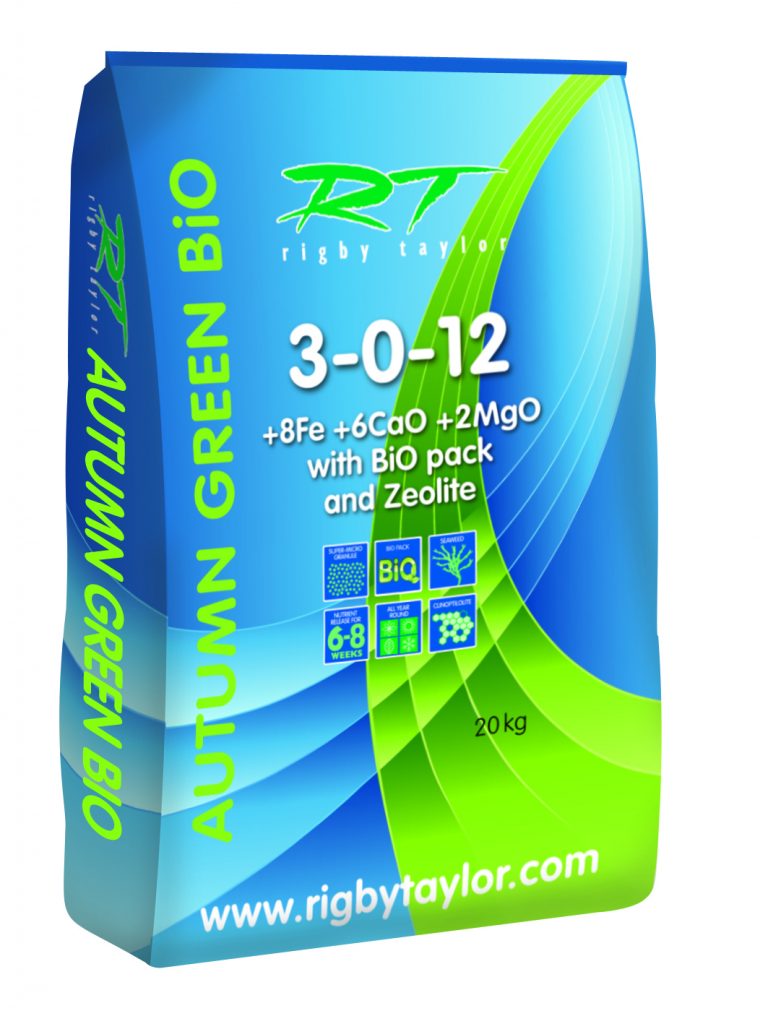The fertilisers to help with root development
Related Articles
Root development is essential at this time of year, and fertilisers that contain a source of humic and fulvic acids, auxins, cytokinins, gibberellins, betaines and complex carbohydrates are particularly beneficial, writes Andrew McMahon.
Spring recovery of grass growth is starting earlier in the year due to the rise in temperatures and pressure is also building on greenkeeping teams as the date has been set for when most courses can reopen for play. This year, more than ever, members with pent up frustration will likely demand the best quality playing surface on which to play. However, plant recovery from winter conditions is limited by the amount of carbohydrates it has stored up in the previous autumn, as the plant uses this energy for root and shoot development.
Potassium plays a key part in carbohydrate storage, but this nutrient is very mobile within the soil profile and deficiencies can be a problem, especially after a wet winter as such conditions and leaching impacts upon its ability to store carbohydrates. Potassium is also involved in the uptake of CO2 in photosynthesis by regulating the opening and closing of the stomata. Any reduction in this essential process has a bearing on the production and the accessibility of Adenosine Triphosphate (ATP).

The lack of ATP availability, means that the phloem transport of sugars around the plant slows down, and since more sugars are left in the leaf, photosynthesis is reduced and light utilisation in the darker months affected.
Applying the correct nitrogen sources in late winter / early spring will also help with encouraging some growth, and assist with the recovery of disease scars. Nitrogen is only available to the plant in nitrate and ammonium forms but mainly nitrate. Depending on the source, it will have to go through nitrification, a process by which sulphate of ammonia becomes plant available. This is the oxidation of ammonia or ammonium to nitrite, followed by the oxidation of the nitrite to nitrate.
The optimum working temperature for this process is 270C (800F). The colder it gets the more this process slows down. Below 150C (590F) nitrification falls rapidly and at 120C (540F) it is reduced by approximately 50-plus percent.
The optimum working temperature for urease is 160C, but enzyme activity slows the colder it gets, so not only will it take longer for the urea to be converted, it also has the same problem during nitrification for becoming plant available. The conclusion, once again, is that urea will work at lower temperatures, but the availability to the plant is greatly reduced in cold conditions.
Nitrate, however, only needs to be solubilised to be available to the plant; once solubilised it can be taken up by the roots, and the healthier the root system, the more availability. However, there are some limitations; the plant needs to be photosynthesising and the ground isn’t frozen. This indicates that nitrate is the perfect nitrogen source for cold conditions, certainly below 70-80C when ammonia is slowly converted to become plant available.
Encouraging root development early can help with nutrient and moisture uptake, and as root growth begins at approximately 50C, the Met Office data shows that this temperature is being reached late winter / early spring.
There are many fertilisers that can help with root development, especially those that contain a bio-pack, which includes lignite and seaweed. A bio-pack is an excellent source of humic and fulvic acids, auxins, cytokinins, gibberellins, betaines and complex carbohydrates. Root development, both length and root is improved, and stresses both biotic and abiotic are reduced. If there is a calcium deficiency, root development will be compromised and this is particularly pertinent in soils with a ph <5.0 and in sandy soils / rootzones with a low Cation Exchange Capacity (CEC). Calcium deficiency will also increase disease pressure so ensuring the levels are adequate is very important. Aeration, undertaken when conditions allow, in conjunction with these products, will ensure optimum development, and in fact is the most important job on any sports surface. The Rigby Taylor Fineturf BiO range of fertilisers contain a bio-pack that delivers the equivalent of eight applications of a standard liquid seaweed when applied at 35g/mt2, as well as calcium, magnesium and iron.
However, high inputs of nitrate can encourage soft growth and heighten disease pressure. A formulation of nitrate with ammonia, or nitrate with ammonia and urea should be the preferred options.
These formulations allow for temperature fluctuations, whilst still giving an initial quick response from the nitrate, followed by the uptake of the ammonia, or ammonia / urea mix. These true ‘cold start’ fertilisers are perfect for applying when top-dressing, as they will encourage growth thus reducing disease pressure.
Fertilisers containing iron and magnesium will also help produce the surfaces required. The iron will give an almost instant visual response once applied, as it is required to produce chlorophyll. Iron will also help to harden the plant against early season disease pressure, reducing the chances of scarring. One thing to be aware of with high Iron analyses is that they can cause blackening and damage to any moss in the sward.
Magnesium, unlike iron, is part of the chlorophyll structure and is in fact its central element, key to its production and so essential for photosynthesis.

This will have a three-fold benefit to cold-start fertilisers containing nitrate and iron. The plant takes up nitrate when it is photosynthesising, even at cold temperatures, so adding magnesium will ensure optimum uptake. It will also provide natural colour but has the added bonus of increasing the plants ability to utilise iron.
Producing the surfaces required and expected at such an early time of the year is difficult, but there are now multiple options available, many that will address the points outlined here, plus other products that will help.
Andrew McMahon is the Fertiliser Product Manager for Rigby Taylor

























